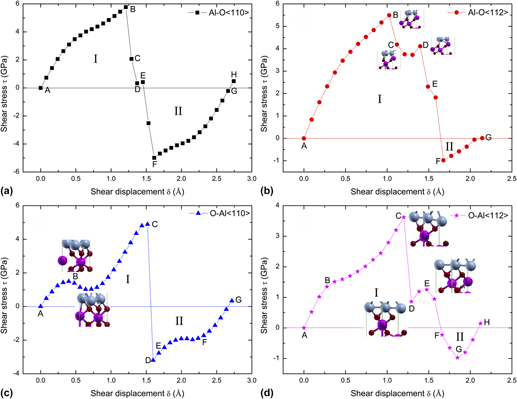Crossref Citations
This article has been cited by the following publications. This list is generated based on data provided by
Crossref.
Guo, Xiancong
Bao, Zeying
and
Shang, Fulin
2013.
Mixed-mode mechanical responses of Ni(111)/α-Al2O3(0001) interface by first-principle calculations.
Journal of Materials Research,
Vol. 28,
Issue. 21,
p.
3018.
Bao, Zeying
Guo, Xiancong
and
Shang, Fulin
2015.
An atomistic investigation into the nature of fracture of Ni/Al2O3 interface with yttrium dopant under tension.
Engineering Fracture Mechanics,
Vol. 150,
Issue. ,
p.
239.
Guo, Xingye
Zhang, Yi
Jung, Yeon-Gil
Li, Li
Knapp, James
and
Zhang, Jing
2016.
Ideal tensile strength and shear strength of ZrO2(111)/Ni(111) ceramic-metal Interface: A first principle study.
Materials & Design,
Vol. 112,
Issue. ,
p.
254.
Fu, X.Q.
Liang, L.H.
and
Wei, Y.G.
2018.
Atomistic simulation study on the shear behavior of Ag/MgO interface.
Computational Materials Science,
Vol. 155,
Issue. ,
p.
116.
Forti, Mariano
Alonso, Paula
Gargano, Pablo
and
Rubiolo, Gerardo
2018.
Esfuerzo de corte en Interfaces Fe/Fe3O4.
Matéria (Rio de Janeiro),
Vol. 23,
Issue. 2,
Zhang, R.F.
Zhang, S.H.
Guo, Y.Q.
Fu, Z.H.
Legut, D.
Germann, T.C.
and
Veprek, S.
2019.
First-principles design of strong solids: Approaches and applications.
Physics Reports,
Vol. 826,
Issue. ,
p.
1.
Guo, Xingye
Lu, Zhe
Jung, Yeon-Gil
and
Zhang, Jing
2021.
Novel Lanthanum Zirconate-based Thermal Barrier Coatings for Energy Applications.
p.
59.
Zhang, Xueyou
Ji, Yanzhou
Chen, Long-Qing
and
Wang, Yi
2022.
First-Principles Calculations of γ-Al <sub>2</sub>O <sub>3</sub>/Al Interfaces.
SSRN Electronic Journal ,
Pei, Xin
Yuan, Meini
Han, Fangzhou
Wei, Zeyuan
Ma, Jian
Wang, Honglin
Shen, Xingquan
and
Zhou, Xiaosheng
2022.
Investigation on tensile properties and failure mechanism of Al(111)/Al3Ti(112) interface using the first-principles method.
Vacuum,
Vol. 196,
Issue. ,
p.
110784.
Hou, Wenhui
Chowdhury, Shoieb A.
Dey, Aditya
Watson, Carla
Peña, Tara
Azizimanesh, Ahmad
Askari, Hesam
and
Wu, Stephen M.
2022.
Nonvolatile Ferroelastic Strain from Flexoelectric Internal Bias Engineering.
Physical Review Applied,
Vol. 17,
Issue. 2,
Bao, Zeying
and
Shang, Fulin
2022.
First-Principles Investigation of the Shear Properties and Sliding Characteristics of c-ZrO2(001)/α-Al2O3(11¯02) Interfaces.
Applied Sciences,
Vol. 12,
Issue. 17,
p.
8869.
Zhang, Xueyou
Ji, Yanzhou
Chen, Long-Qing
and
Wang, Yi
2023.
First-principles calculations of γ-Al2O3/Al interfaces.
Acta Materialia,
Vol. 252,
Issue. ,
p.
118786.
Bao, Zeying
and
Shang, Fulin
2023.
New Insights on the Tensile Strength and Fracture Mechanism of c-ZrO2/α-Al2O3 Interfaces.
Applied Sciences,
Vol. 13,
Issue. 6,
p.
3742.



